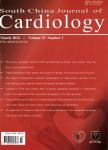Vacuum sealing drainage technique in the treatment of poor healing wounds after heart valve surgery:experience in cardiac nursing
Vacuum sealing drainage technique in the treatment of poor healing wounds after heart valve surgery:experience in cardiac nursing作者机构:Department of Burns and Wound Repair Surgery Guangdong General Hospital Guangdong Academy of Medical Sciences
出 版 物:《South China Journal of Cardiology》 (岭南心血管病杂志(英文版))
年 卷 期:2014年第15卷第4期
页 面:279-281页
学科分类:1011[医学-护理学(可授医学、理学学位)] 10[医学]
基 金:supported by Medical Scientific Research Foundation of Guangdong Province(No.B2013019) National Science & Technology Pillar Program during the 12th Five-year Plan Period(No.2013BAI07B00)
主 题:vacuum sealing drainage nursing heart valve surgery
摘 要:Background Poor wound healing or postoperative infection after open-heart surgery is most commonly seen. If not treated in time or the infection progresses, it can lead to sternal infection, even mediastinal and pericardial infection, causing a higher mortality rate. Vacuum sealing drainage (VSD) is a new technology to promote wound healing. We studied the use of VSD technique in poor wound healing after heart valve surgery to see if it could achieve good therapeutic efficacy. Methods From 2013 October to 2014 October in Guang- dong General Hospital, 86 cases of the application of vacuum sealing drainage technique in the treatment of cardiac nonunion after valve replacement in patients with nursing observation. The treatment time, death rate and infection rate, etc were compared. Results Wound healing time of 86 patients receiving vacuum sealing drainage was 14.6 ± 3.6 days, and no patient died. Two patients came back to hospital for repair due to dehis- cence of the incision after discharge. Conclusion Nursing observation and drainage management were the key of VSD. VSD technique is worthy to be popularized clinically.



